
views
Recognizing Hornet Nests
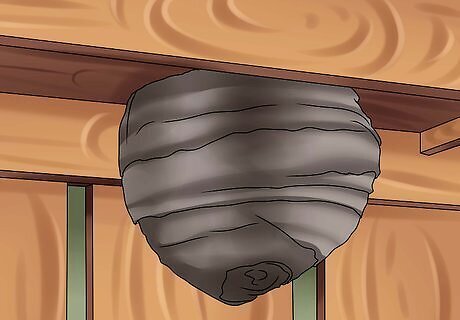
Observe a gray, oval-shaped object made of paper. While it’s not actually paper, it is a paper-like substance made from hornet saliva and wood. The nest houses eggs and hornets are very protective of both their home and their eggs. Hence, you really don’t want to be caught near their nest lest they consider you a danger. While it starts as a small, honeycomb-looking object, as the colony grows, the nest expands to an oval shape resembling a football, stalactite, or inverted teardrop. This means that just identifying the structure can help you narrow down your insect neighbors but does not determine exactly what type of insect they are. Paper wasps also use a paper-like building material but their nests have no paper envelope that covers and protects the nest.
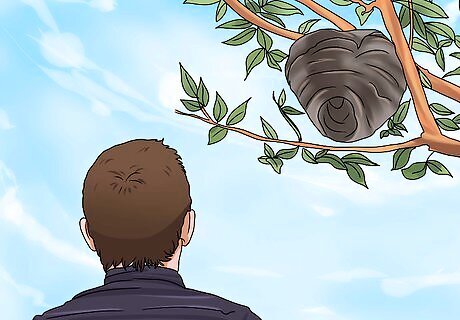
Look for the nest outside and up high in a covered area. Hornets build their nests in outdoor areas and usually high above ground, such as in trees, on a utility pole, or in thick shrubs. They will also build nests on the eaves of roofs and under decks. Often you won’t see their nest until autumn when the leaves fall off and reveal the nest hidden within. By this time most of the hornets will be dead or dying, leaving only the queen to hibernate and live through the winter. In contrast, yellow jacket nests can often be found either close to the ground, underground, or inside any loose structure they can find, such as between the inner and outer walls of a house or even inside an old mattress. Some wasps that build nests high above the ground are incorrectly called hornets. The North American bald-faced hornet (Dolichovespula Maculata) is actually a species of wasp, as is the Australian hornet (Abispa ephippium), which is a subspecies of the potter wasp.
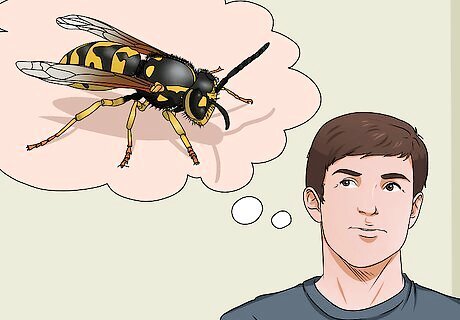
Estimate the number. Hornet colonies can have as many as 700 members. If the nest is significantly larger, one you think contains thousands of members, odds are you are looking at a yellow jacket nest. So keeping a close eye – from a distance – is key to knowing whether they are hornets or yellow jackets. Whether the nest is small or large, the way to handle the nest is to call in professionals. These people will need to know how big the nest is so the more information you can give them the better equipped they will be to handle it.
Identifying a Hornet By Sight

Observe distinguishing characteristics. A hornet, like a wasp, has a thin waist between the thorax and the abdomen. This physical trait is known as being "wasp-waisted." It distinguishes them from the bee family, which have thick waists between the thorax and abdomen.
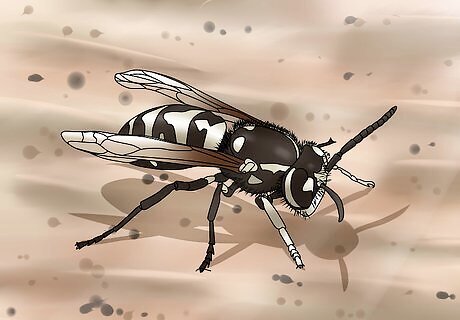
Look for black and white coloring. Unlike bees, which have a brownish-yellow and black coloring, and some other members of the wasp family, such as the yellow jacket and mud dauber, which have a bright yellow and black coloring, most hornets are black and white. Some species, however, such as the yellow hornet and the European hornet, are colored differently so it’s important to also look at the insect’s “waist.”
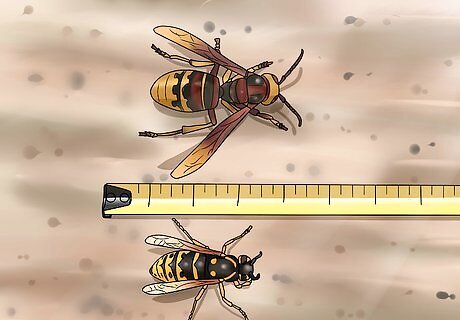
Be aware of the size difference between a hornet and a wasp. One main difference between a hornet and a wasp, one that is easily recognizable either up close or at a distance, is size. For example, the only true hornet in the USA and Canada is the European hornet, which grows to be approximately 1-1.5 inches long. The maximum size for a paper wasp or yellow-jacket is 1-inch and usually, they are smaller than that. Hornets, like wasps, have six legs and two pairs of wings.

Distinguish further hornet body characteristics. Unlike other members of the wasp family, the section of the abdomen closest to the thorax, called the gasters, is more rounded in a hornet than in other wasps. This makes it the first area to look when needing further clarification as to whether you are looking at a wasp or a hornet.
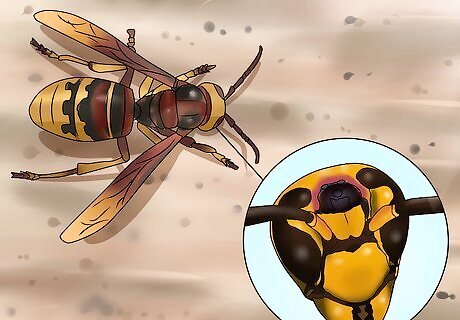
Notice the wider width of the head behind the eyes. Called the vertex, this section is wider, in terms of the overall body size, in hornets than in other members of the wasp family.

Look to see if the wings are folded down the length of their bodies. While some other members of the wasp family fold their wings down the length of their bodies when resting, it is another indicator to help you narrow down whether you are looking at a hornet or a wasp.

Note the absence of barbs on the stinger. Bee stingers are barbed, causing them to tear out of the bee's abdomen when the target is stung, which also takes the bee's life. In contrast, hornets, like other members of the wasp family, have barbless stingers, allowing them to sting repeatedly without losing their stingers. While this helps differentiate between a hornet or wasp and a bee, if you’re this close you may want to walk quietly away.



















Comments
0 comment